|
26. Pieris brassicae (Linnaeus, 1758) / Large white / Pieridae – Pierinae
NL: groot koolwitje / D: Groβer Kohlweiβling / F: piéride du chou, le papillon du chou
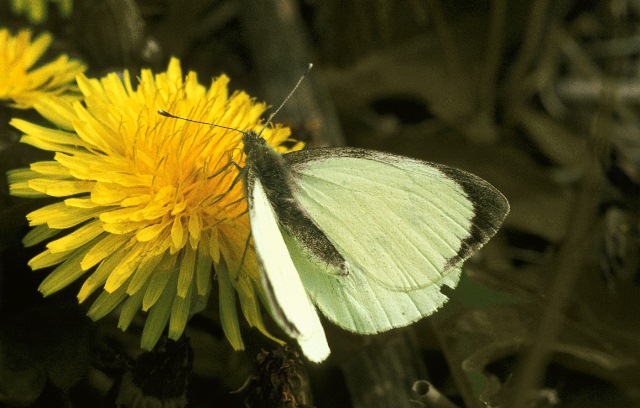 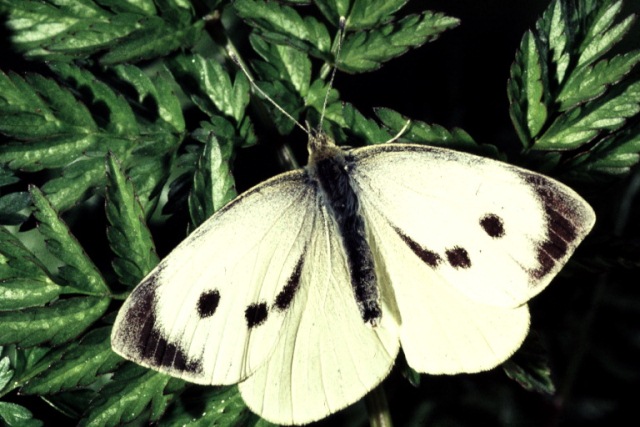 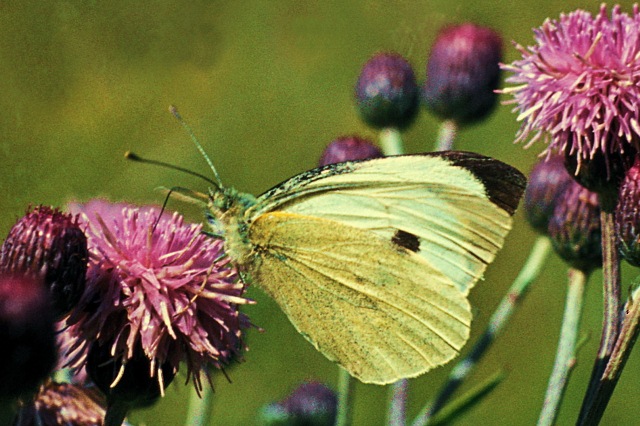
Photographs: Frits Bink ©.
Large, wing length 30 (28-32) mm. The species is common in the Benelux and occurs mainly in two generations, the early summer brood in May and June larvae of which feed on all kind of cruciferous herbs like garlic mustard in woodland and honesty in gardens, summer brood in July and August on tall herbs like sand rocket in the coastal dunes and all kinds of cabbage varieties in gardens and arable fields. There is a seasonal switch between large herbs in the spring to those which are suitable in the summer and autumn; large plants are necessary because females deposit large egg batches and the resulting aposematic coloured larvae feed together in groups.
Butterfly is on the wing from end-April until early-October; the flight period in Flanders is a little longer than it is in Wallonia and the late season peak occurs in September.
The species is known from maritime and continental climates, amplitude 4 to 18, and the required heat number is 450°d and maximum tolerated 3300°d and this corresponds with a climate window of 20 weeks and the whole year open.
This species has been studied extensively for two reasons, firstly it was a pest in cabbage culture in many countries, secondly it is easy to breed in the laboratory and to use for all kinds of experiments providing education in natural history. The life cycle varies with climate zone: in the temperate zone it is a nomad but in the Mediterranean zone it migrates to a cooler climate up in the mountains or northern regions to escape from heat and drought during the hot summer. It breeds in the winter in the Mediterranean lowlands on all kind of cruciferous herbs including cabbage. During migration it may fly in large swarms and cross distances of hundreds of kilometres. It has reached outside Europe to Chile probably by pupae transported on packaging of shipping cargo.
Ecological characteristics
Behaviour over time
Overwintering: pupa attached to stone or trunk, pupa fully exposed.
Reproduction: oviposition starts after 6-8 days when the body contains 83 (54-112) eggs. Observed potential more than 10 times as much.
Larval feeding periods: 2-4 weeks in temperate climate zone from early-May until late-October.
Generations: 1 to 4, depending on the climate, in temperate climate usually 2.
Spreading of risk: facultative diapause in pupal stage, migration by the adults.
Life cycle: egg 6 (4-7) days; larva 19 (13-24) days; pupa 13 (8-16) days, in the case of overwintering 23-47 weeks.
Life span of adult: long, 4 weeks.
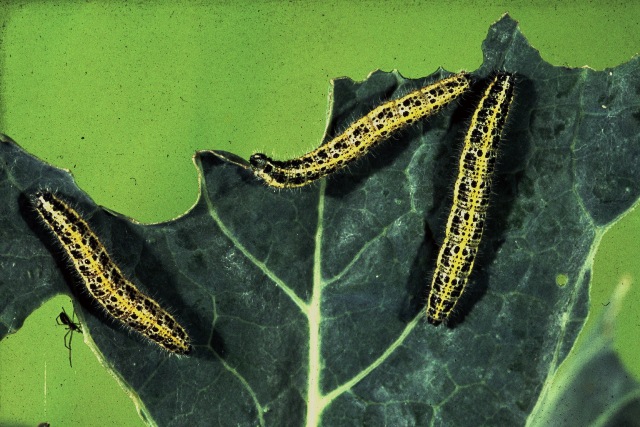 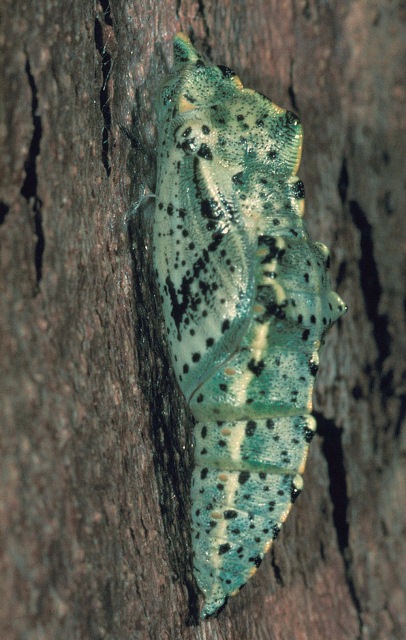
Photographs: Frits Bink ©.
Behaviour in space
From stay-at-home to migrant: nomad, sometimes migrating in a swarm.
Finding a mate: sexes meet each other in flowery places.
Orientation in the landscape: on landscape patterns like coastal area, river banks but also on finer details in the countryside and urban areas like gardens and fallow places.
Oviposition: eggs are laid in batches of 45 (25-83) on mature leaves.
Defence
Threats from other organisms: the species is well equipped with defences against avian predators: mustard oil derivate (sinigrin) in the body and pterine in the scales on the wings. However, it is often heavily attacked in the larval stage by the tiny braconid wasp Cotesia glomerata, well known by the yellow cocoons on the dying caterpillar when the larvae of the wasp leave the host to pupate.
Threats from the environment: larvae and adult rather tolerant of heat and cold.
Feeding habits
Adult: nectar of all kinds of flowers.
Larva: living with 10-80 larvae together and feed usually on mature leaves.
Larval foodplants
Plant species: Brassicaceae, e.g. Alliaria petiolata, Brassica oleracea, B. rapa, Cakile maritima, Crambe maritima, Diplotaxis muralis, D. tenuifolia, Isatis tinctoria, Lunaria annua, Rorippa amphibia, R. sylvestris. Tropaeolaceae, Tropaeolum majus.
Journal
Breeding experiments in the laboratory have been conducted extensively by David & Gardiner 1961, 1962 and by Feltwell 1982. The latter records the average maximum production of 725 eggs per female.
Experiments by the author:
1. In 1967, a pair from Amsterdam were kept under a daily temperature cycle of 18-22°C, supported by artificial light. An egg laying period 22 days was observed, with an average daily egg production of 65 and a longevity 27 days. During this period mating occurred three times. Total production was 1423 eggs, all hatched and produced healthy larvae.
2. In 1984, females from a breeding experiment were used to observe the effects of feeding honey-water versus pure water (see table 26).
Table 26-1. Results of dissections

Comments: after 12 days of feeding with honey-water, egg production in ovarioles stopped abruptly because the body became overloaded. After 7 days of feeding with only water, egg production had stopped because of shortness of food.
3. In November 1984, about 20 butterflies were put outdoors, they did not move away because of the cold weather. After three days great tits (Parus major) discovered the butterflies and started to tear the bodies open and consume the contents, leaving the thorax with the wings intact.
Table 26-2. Collection and observation localities
D, Borkener Paradies 52° 43’ 29”N – 7° 14’ 36”E; 9 July 2002.
D, Eschweiler 50° 47’ 09”N – 6° 16’ 37”E; 18 June 1983.
D, Kaub 50° 05’ 36”N – 7° 45’ 43”E; 26 May 1986.
D, Lorch 300m, 50° 02’ 05”N – 7° 47’ 56”E; 31 July 1985.
DK, Ørnhej 56° 13´ 06”N – 8° 34´ 00”E; 13 June 2004.
E, Las Negras 36° 52’N – 2° 00’W; 22 February 2005.
E, Salinas 37° 36’ 08”N – 0° 43’ 47”W; 10 February 2005.
EST, Endla Nature Reserve, 58° 52 34”N – 26° 16’21”E; 10 July 1999.
F, Aurel, 400 m, 44° 43’N – 5° 16’E; 29 August 1984, 2 September 1984.
F, Brittany, Telgruc-sur- Mer 48° 12’ 25”N – 4° 22’ 25”W; 29 September 2004.
F, la Grande Brière 47° 23’ 42”N – 2° 17’ 22”W; 24 September 2004.
F, Lorraine, Dieue-sur Meuse 49° 05’ 11”N – 5° 27’ 25”E; 19 August 1984.
F, Montmédy 217 m, 49° 31’ 07”N – 5° 21’ 33” E; 12 June 1984, 18 August 1984.
F, Normandy, Havre de Surville 49° 16’ 47”N – 1° 40’ 23”W; 19 September 2005.
NL, Amerongen, garden 52° 00’ 01”N – 5° 27’ 34”E; 1975-1986.
NL, Bennekom, garden, 51° 59’ 30”N – 5° 40’ 34”E; 1988-2014.
NL, Leersum, garden 52° 00’ 29”N – 5° 24’ 04”E; 1975-1986.
NL, Meeuwenkampje 52° 02’ 57”N – 5° 32’ 53”E; 9 June 1984.
S, Gotland, Hummelbosholm 57° 11’ 48”N – 18° 32’ 56”E; 8 July 2004.
Fig. 26-1. Pieris brassicae, phenogram adapted from Fichefet et al. 2008: 87.
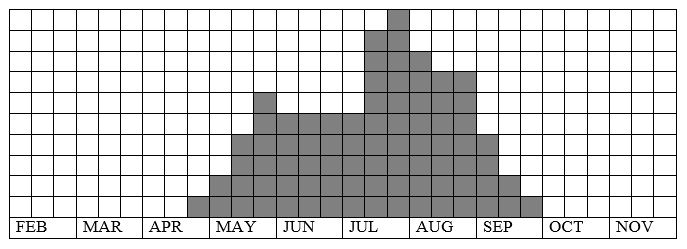
Fig. 26-2. Pieris brassicae, habitat characteristics.
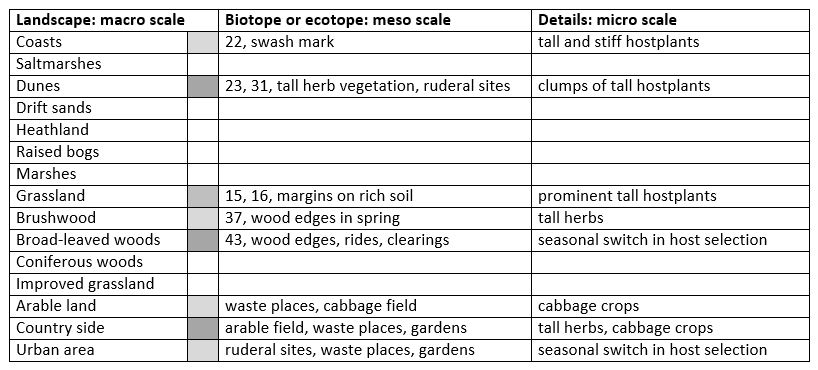
Fig. 26-3. Pieris brassicae, climate matrix, heat-sums 450 - 3300°d.
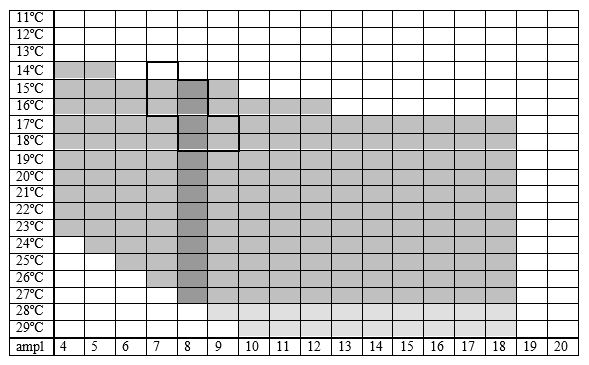
|










